Essential Kitesurfing Gear for New Enthusiasts
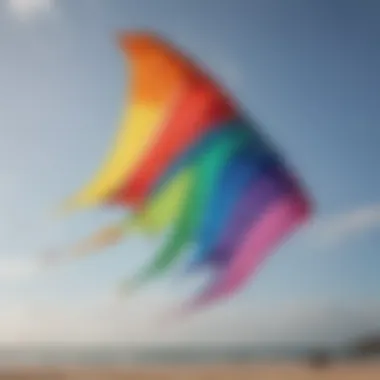
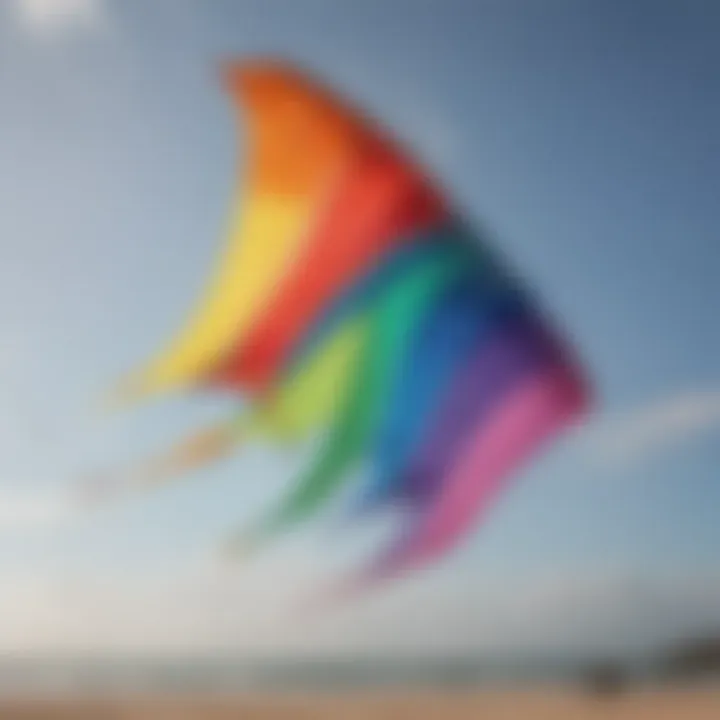
Intro
Kitesurfing combines the thrill of surfing with the exhilaration of flying a kite. This sport attracts adrenaline junkies and nature lovers alike. If you're just stepping into the vibrant world of kitesurfing, you might find the array of gear and techniques a bit overwhelming. That's perfectly normal. Understanding basic kitesurfing equipment is essential for a safe and enjoyable experience on the water. This guide will pave your way, pinpointing the essentials you'll need and how to select the right items for your adventure.
Before diving headfirst into the surf, it’s vital to grasp the fundamental skills involved. This includes mastering the basics of kite control and board riding. As you progress, you can refine these skills into more advanced techniques, ensuring your time on the water is both exciting and safe. Let's start by exploring the techniques and skills crucial for beginners.
Understanding Kitesurfing
Kitesurfing has gained immense popularity over recent years, attracting thrill-seekers and ocean lovers alike. Understanding kitesurfing not only opens the door to an exhilarating experience but it also brings safety and enjoyment to the forefront. For beginners, having a solid grasp on the fundamentals is crucial, as it informs the choice of equipment and techniques that will be essential on their journey. Consider this: a well-informed novice is more likely to progress quickly while minimizing risks. You wouldn’t jump into deep waters without a life jacket, right?
Historical Context
The origins of kitesurfing date back several centuries, with roots in various cultures using kites for propulsion. Interestingly, the modern version of kitesurfing started taking shape in the late 20th century. In the 1970s and 1980s, pioneers like Gijsbertus Adrianus Panhuise and later inventors experimented with different types of kites and boards. This experimentation laid the groundwork for what we now recognize as a vibrant sport. Today, kitesurfing isn't just an activity; it's a blend of art, science, and sheer adrenaline. It's fascinating to think about how primitive kite designs have evolved into technologically advanced kites that can handle extreme conditions.
Basics of Kitesurfing
At its core, kitesurfing involves harnessing the wind to propel oneself across the water while riding a board. The basic mechanics involve three main components: the kite, the board, and the harness.
- Kite: The primary tool that captures the wind. Selecting the right kite can make or break your experience.
- Board: This is where the real magic happens. The board allows you to glide and maneuver on the water. Different types cater to various styles and skill levels.
- Harness: This connects you to the kite and is crucial for transferring pulls from the kite to your body effectively.
As you dive deeper into kitesurfing, you’ll quickly learn about wind conditions, safety protocols, and techniques for getting on the board. At times, it may sound overwhelming, but many enthusiasts find that trial and error foster a rewarding learning curve. Remember, every expert was once a beginner, grappling with how to keep the balance and not faceplant into the water—something we can all relate to.
"It's not just a sport; it's an experience where you become one with nature."
By understanding kitesurfing on these levels, you'll set the stage for informed decisions as you delve into specific gear, thereby enhancing your overall kitesurfing experience. As with any skill, knowledge is power, and in this case, it’s the power to ride the waves with confidence.
Kites: The Heart of Kitesurfing
Kites serve a crucial role in kitesurfing, acting as the engine that breathes life into the sport. They embody the essence of kitesurfing, transforming wind into power and allowing enthusiasts to glide across the water. The right choice of kite can make a substantial difference not only in performance but also in the overall enjoyment and safety of the sport. Beginners need to have a solid grasp of the various options available, including their capabilities, limitations, and how each type aligns with individual skill levels and riding styles.
Types of Kites
Inflatable Kites
Inflatable kites are widely favored by beginners due to their simplicity and ease of use. These kites consist of inflatable chambers that help maintain their structure and provide stability when in the air. Inflatable kites are particularly advantageous for novice riders, as they offer greater support in a variety of wind conditions. One standout feature is their forgiving nature, making it easier to relaunch after a crash.
Inflatable kites are often a go-to choice for beginners, thanks to their user-friendly characteristics and resilience in challenging conditions.
However, while they are popular, they may come with some drawbacks. For instance, they can be heavier than other types, affecting performance in light winds. But overall, their robustness and reliability make them a solid pick for novices.
Foil Kites
Foil kites represent another intriguing option, demonstrating a different design philosophy compared to inflatable ones. Instead of using air-filled bladders, foil kites consist of multiple cells that develop lift as air flows through them. This construction can lead to enhanced performance in light winds and allows for more efficient flying.
A key characteristic of foil kites is their ability to stay aloft even in the most challenging winds, which can be useful for exploring new spots or venturing into less predictable weather. Briefly, they are often considered lighter and can be easier to pack.
Nevertheless, drawbacks do exist, as their need for precise handling might not suit every beginner. Their relaunching process can also be trickier than that of inflatable kites, requiring some practice.
Trainer Kites
Trainer kites are specifically designed for those just dipping their toes into kitesurfing. Ideal for honing skills in a controlled environment, these kites are excellent tools for beginners to grasp the fundamentals of kite control. They’re generally smaller and less powerful, which minimizes risks and injuries associated with larger kites.
A significant advantage of trainer kites lies in their ability to provide immediate feedback to the user. Riders can practice flying, launching, and landing without the intimidation of being pulled across the water at exhilarating speeds. However, their limited power means that they may not be suitable for all advancements in kitesurfing. To transition to larger kites, additional practice and guidance will be essential.
Size Selection
Choosing the right kite size is fundamental for achieving success in kitesurfing. The size affects how much power an individual can harness from the wind, and beginners should consider their weight, skill level, and the typical wind conditions they’ll encounter. A larger kite generates more power in lighter winds but can become unwieldy in stronger gusts. Conversely, a smaller kite is easier to control and provides better handling in gusty conditions but won’t perform as well in very light winds. Opting for a kite that matches your weight and typical riding conditions ensures a more enjoyable experience.
Understanding Wind Conditions
The wind is the lifeblood of kitesurfing, and understanding its nuances is paramount for beginners. Wind speed and direction greatly influence equipment choice and kitesurfing techniques. You need to learn how to gauge conditions accurately.
Firstly, familiarizing oneself with the Beaufort scale can help identify wind strength, which ranges from calm breezes to gales. Novices should start with light to moderate winds, which typically provide ample lift without overwhelming the rider. Furthermore, it’s essential to stay alert to changing conditions while out on the water. Wind can pick up quickly, and being aware of any shifts can help prevent mishaps.
Kitesurfing Boards Explained
When diving into the world of kitesurfing, understanding the role of the board is as crucial as knowing about the kite. The board serves as the interface between you and the water, playing a key part in your overall experience. A good board can make the difference between a smooth ride and a chaotic tumble. Getting the right board influences not just your enjoyment but also your progression in this thrilling sport.
Types of Boards
Twin-Tip Boards
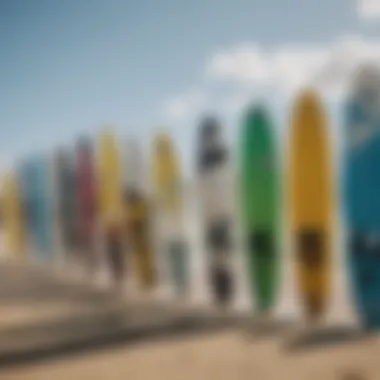
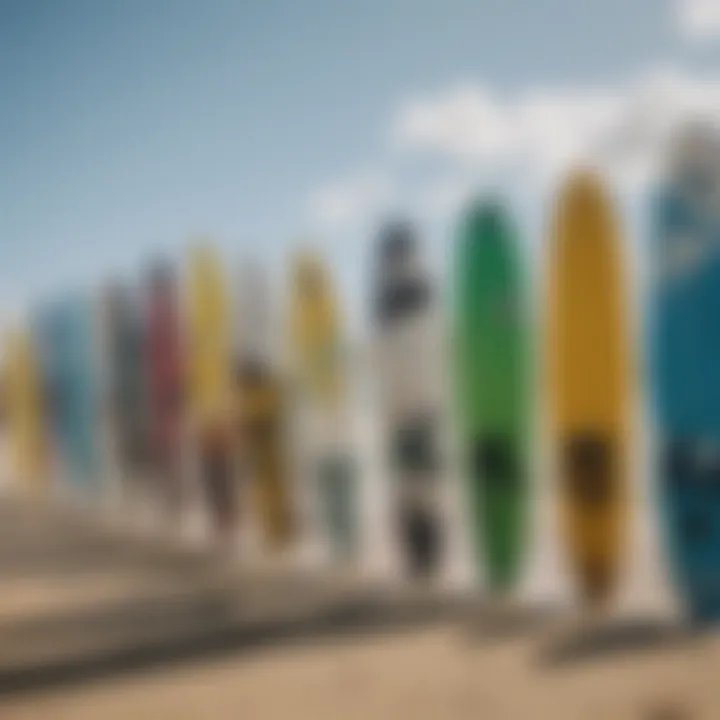
Twin-tip boards stand out as a staple in kitesurfing gear. They're like the Swiss army knife of boards, designed for versatility. What sets them apart is their identical shape on both ends. This means riders can easily switch directions without needing to turn the board around. Their symmetrical design makes them an ideal pick for beginners, as it simplifies the learning curve.
One distinct advantage of twin-tip boards is their buoyancy. This attribute allows for easier water starts, which can be a game-changer when you're just starting out. Still, it's worth noting that these boards can have limitations in certain conditions, such as high waves or strong winds, often making them less effective than other types.
Directional Boards
Directional boards, as the name suggests, are designed to be ridden in one direction. Unlike twin-tips, these boards often have a pronounced nose and tail, which helps in slicing through waves, enhancing performance in surfing conditions. This type is often favored by those who have a bit more experience and seek to master the surf style of kitesurfing.
A unique feature of directional boards is their ability to handle chop and waves with more grace. Riders feel more connected to the water, making for a more exhilarating ride. However, switching directions is not as straightforward as with twin-tips. Beginners might find the learning curve a bit steeper if they start with these boards.
Foil Boards
Foil boards introduce a new dimension to kitesurfing. They comprise a board and a hydrofoil, which extends below the board. This design allows the board to lift above the water when gaining enough speed, creating a sensation of flying over the water. This element can amplify the thrill of kitesurfing, appealing to adventurous souls yearning for something beyond the conventional experience.
The standout characteristic of foil boards is their efficiency in low winds. They can glide over even the smallest waves, making them much easier to ride than traditional boards in light wind scenarios. However, this unique set-up demands a bit of skill and can be intimidating if you're just starting out. Additionally, the price point for quality foil boards often lands on the higher side, which is something new riders should consider during their purchasing decisions.
Material and Shape Considerations
When considering boards, it’s vital to think about materials and shape. Boards can be constructed from various materials including foam, composite, and wood. Each of these materials boasts unique properties that can drastically influence performance and durability.
- Foam Boards: Lightweight and generally more forgiving, they are favored by beginners.
- Composite Boards: These are often more durable and provide better performance in a variety of conditions.
- Wood Boards: Suitable for those looking for a more environmentally friendly choice, though they may not provide the same performance.
The shape of the board—be it wide and short or long and narrow—also affects how it rides. A shorter, wider board will offer stability, making it perfect for those who prefer casual rides. In contrast, longer and narrower models can cut through water faster, which benefits advanced riders aiming for speed.
Choosing the Right Harness
When it comes to kitesurfing, the harness is your best friend. It connects you to the kite, allowing you to harness the power of the wind while letting your arms have a rest. Getting the right harness can influence not just your comfort, but also your entire kitesurfing experience. In this section, we’ll delve into the different types of harnesses available, their benefits, and how to find the perfect fit for your unique style.
Types of Harnesses
Waist Harnesses
Waist harnesses are a popular choice among kitesurfers, especially those who lean towards freestyle and trick-based riding. These harnesses sit around your waist and use a strong strap system to keep you secured without obstructing your movement.
One of the key characteristics of waist harnesses is their ability to provide a high degree of freedom for your legs. This can be crucial when you’re aiming to execute jumps or turns. The harness permits a more upright posture, allowing for better control of the board and kite during maneuvers.
However, waist harnesses do come with some considerations. While they’re favored for their flexibility and freedom, they may not provide enough support for all beginners. A disadvantage is that if they’re not fitted correctly, they can ride up, causing discomfort. It’s advisable to try one on and adjust the straps before heading out on the water.
Seat Harnesses
Seat harnesses sit lower on your body, providing more support for your lower back. This feature can make them an attractive option for those who might struggle with balance or have less experience. Unlike waist harnesses, seat harnesses hug your hips and overall torso area, ensuring you remain supported throughout your ride.
An important benefit of using a seat harness is that it typically allows for a more secure fit, meaning you can focus on controlling your kite and board. This makes them a popular choice for novices who are still getting the hang of the sport. The unique feature of seat harnesses is their added comfort in terms of support, particularly for those who find themselves tiring quickly.
On the flip side, one potential downside is that they may restrict leg movement more than waist harnesses. Therefore, if your goal leans toward aggressive riding styles that require a great range of motion, this may not be the best option for you.
Fit and Comfort
Finding the right fit and comfort level for your harness is like finding a needle in a haystack—vital, but can take some time. A well-fitted harness shouldn’t pinch or rub against your skin. Instead, it should feel snug but not restricting.
It's suggested to strapping the harness on while standing, sitting, and moving around a bit. This will help determine its fit during those moments when you're out on the water.
At the same time, think about padding and materials. Generally, look for harnesses that have decent padding and are made from durable materials. Remember, every detail counts—just like double-checking whether your kite lines are tangled before you hit the waves.
Finding a comfortable harness that suits your style can significantly improve your kitesurfing experience. Pay attention to personal preference and don’t hold back on trying different types until you find the one that feels just right. After all, you’re here for the thrill, and discomfort can put a damper on any adventure.
"The right gear makes all the difference, but comfort and fit are king."
By taking the time to carefully explore your options and understanding the specifics of each harness type, you'll put yourself in a better position to enjoy those breezy days on the water.
Safety Gear Essentials
When entering the thrilling realm of kitesurfing, one cannot overlook the importane of safety gear. It is not just an add-on; it serves as the first line of defense against the unpredictable elements of nature and the inherent risks tied to the sport. Getting the right equipment can make the difference between enjoying a day on the water and needing to call it quits because of injury or mishap. As beginners, understanding the essentials of safety gear will empower you to take to the waves with confidence.
Impact Vests
Impact vests are designed to provide protection against choppy waters and potential falls. Though it’s true that many kitesurfers do ride without them, an impact vest can be a real game-changer for novices. If you misjudge the wind and land awkwardly or if the board itself throws you off, this piece of gear can absorb some of the jolts from a crash.
Considerations when choosing an impact vest include:
- Fit: It should be snug yet comfortable, allowing full range of motion while ensuring it stays in place.
- Material: Look for vests made from high-quality materials that provide buoyancy and durability.
- Design: Some feature additional padding in critical areas to safeguard ribs and back.


By investing in a good impact vest, you're not just protecting yourself; you’re acknowledging the importance of staying safe while pushing your limits.
Helmets
Helmets may not be the first thing one thinks of when gearing up for kitesurfing, but they deserve a second glance. They’re particularly vital for those more adventurous souls who enjoy jumping or riding in crowded spots. A helmet can shield against head impacts that can happen from falls or other riders.
When selecting a helmet, keep these aspects in mind:
- Ventilation: A well-ventilated helmet will keep you cool and comfortable during long sessions.
- Weight: A lightweight helmet reduces fatigue, making it easier to enjoy your time on the water.
- Certification: Look for helmets that meet safety standards to ensure effectiveness in protecting your noggin.
Taking the time to wear a helmet can seem tedious, but the peace of mind it brings is worth its weight in gold, considering how fast accidents can happen.
Safety Leashes and Quick Releases
A safety leash serves as a vital connection between you and your kite. This gear makes sure that should you find yourself in a precarious position, your kite won't drift far away or pose a danger to others. Quick release mechanisms are also essential. They allow you to let go of the kite immediately when things don’t go according to plan.
With safety leashes and quick releases, ensure you prioritize the following:
- Durability: The leash should be robust enough to withstand the force of the kite, preventing unwanted breakage.
- Ease of Use: Quick-release systems ought to be intuitive. In a pinch, you don’t want to fumble with a complex mechanism.
- Safety Features: Some leashes come equipped with extra safety features, such as a safety ring that allows for even quicker releases.
Keeping a close eye on these components can drastically up your safety game. Remember, kitesurfing is about enjoying the thrill while being sensible and prepared for anything that might come your way.
"Safety gear may not exactly seem flashy, but it underpins your enjoyment of the sport."
In summary, never underestimate the role of safety gear in kitesurfing. Start your adventure with the proper protections in place, and it ensures you’re heading down the right path toward becoming a skilled kite surfer.
Bar and Lines Specifications
In kitesurfing, customized gear isn’t just for show; it’s a necessity for achieving the precision and control required to navigate the waters safely and effectively. The control bar and lines serve as the primary interface between the rider and the kite. Understanding these components and their specific attributes can dramatically improve your overall experience on the water.
Components of a Control Bar
A control bar connects you directly to your kite, allowing you to steer and manage power. Generally, a control bar consists of several critical parts:
- Bar Ends: These are the ends of the bar that help you manage the lines. Often, they have safety features integrated.
- Depower Strap: This adjustable strap is crucial for controlling the kite’s pull. The length can be altered depending on wind conditions and personal preference.
- Safety System: A quick-release mechanism is paramount for emergency situations. It allows you to detach from the kite swiftly, minimizing risk during unexpected mishaps.
- Grips: Comfortable grips help avoid fatigue particularly during extended sessions on the water. They often come in different textures for personal preference.
The materials used in the control bar also matter. For instance, light-weight yet durable elements such as aluminum are common in decent quality bars, balancing strength with ease.
Line Length and Material
The lines attached to the control bar are just as significant, perhaps more. The length and material of these lines determine how your kite behaves in the wind, as well as your distance from the kite itself.
- Length: Most kitesurfing lines range from 20 to 27 meters. Longer lines give you more power and speed; shorter lines offer quicker responsiveness but may sacrifice some stability. Beginners often benefit from a medium length until they feel comfortable adjusting their progression.
- Material: Commonly, lines are made of materials like Dyneema or Spectra. These materials are known for their high strength-to-weight ratio. When shopping for lines, consider their thickness. Thinner lines tend to have less drag in the water, but thicker lines may offer more durability—especially important for novice riders who may not have a masterful control yet.
"The right balance in line length and material can turn an intimidating sport into a thrilling adventure."
Both the control bar and the lines should be inspected regularly. Check for any frays or damage that could lead to accidents. Implementing this sort of maintenance not only promotes longevity of your gear but also enhances your safety on the water.
Clothing and Accessories
When diving into the vibrant world of kitesurfing, it’s not just about the kite and the board. Clothing and accessories play a pivotal role in ensuring comfort, safety and overall enjoyment while riding the waves. Not to mention, they can significantly affect your performance. Here’s a closer look at why the right gear matters, particularly focusing on wetsuits, booties and gloves, along with protective accessories like sunglasses and sunscreen.
Wetsuits
Choosing the right wetsuit is crucial for any beginner keen on kitesurfing. Wetsuits are designed to keep you warm in cooler waters and protect your skin from the sun and abrasions. When selecting a wetsuit, consider the water temperature where you plan to surf. For warmer waters, a shorty (short-sleeved wetsuit) may suffice, while chillier conditions may require a thicker, full-length suit.
- Thickness and Material: Most wetsuits come in different thicknesses, generally measured in millimeters. A 2/2mm wetsuit will be lighter and more flexible, perfect for summer. Conversely, a 4/3mm will provide warmth during cooler months. Remember, not all materials are created equal; neoprene is a popular choice for its insulating properties and flexibility.
- Fit: A wetsuit should fit snugly without being overly restrictive. An ill-fitting suit can lead to chafing, reducing your enjoyment on the water.
A well-fitted wetsuit is your first line of defense against the elements, keeping you both warm and agile as you conquer the waves.
Booties and Gloves
While some might think they’re optional, booties and gloves can make a world of difference, especially for beginners. They provide not only warmth but also protect your extremities from cuts and scrapes, which can happen when you are getting in and out of the water or during unexpected wipeouts.
- Booties: Designed to fit snugly on your feet, booties come in various styles and thicknesses. A common choice for beginners are the 3mm neoprene booties, offering a good balance between warmth and flexibility. They ensure a firm grip on your board, allowing for better control in the water.
- Gloves: Neoprene gloves are another asset, especially in colder climates. They keep your hands warm while maintaining dexterity, essential for gripping the control bar. When choosing gloves, look for those with a textured grip to avoid slippage during action-packed sessions.
Sunglasses and Sunscreen
Sun protection is often overlooked but is vital for kitesurfers who spend long hours under the blazing sun. UV rays can cause both short-term discomfort and long-term damage to your skin and eyes.
- Sunglasses: Invest in a good pair of polarized sunglasses that provide UV protection. They help reduce glare from the water and enhance visibility, crucial for spotting other kitesurfers or navigating your way back to shore. Consider a strap to prevent losing them while you’re flying through the water.
- Sunscreen: Apply a water-resistant sunscreen with a high SPF rating generously on all exposed skin. Remember to reapply every couple of hours, especially after a long session in the water.

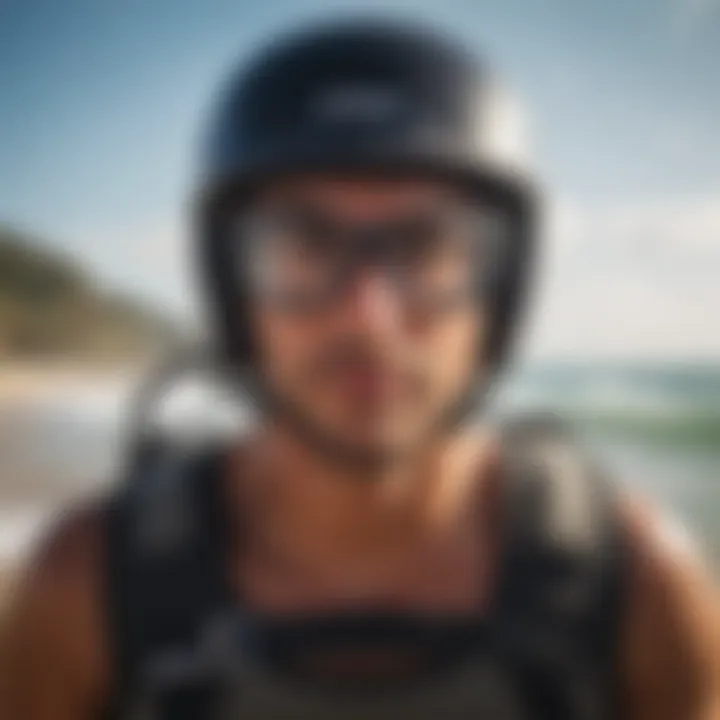
In summary, incorporating the right clothing and accessories into your kitesurfing gear significantly enhances not only comfort but also your safety and performance. As you gear up for your adventures, never underestimate the power of a good wetsuit, reliable booties, and solid sun protection.
Buying Guide for Beginners
When embarking on the thrilling journey of kitesurfing, having the right gear is just as crucial as understanding the sport itself. A well-informed buying guide can be a game changer for beginners, transforming a daunting task into a manageable one. This guide aims to equip newcomers with the necessary insights to make sound decisions while shopping for their kitesurfing kit. Each piece of equipment plays a vital role, and knowing what to look for can ease the pressure of stepping into this exhilarating world.
New vs. Used Equipment
Deciding between new and used kitesurfing equipment can be quite the puzzle for beginners. On one hand, new gear often comes with all the bells and whistles, the latest technology, and, importantly, a warranty for peace of mind. It’s like driving off the lot with a brand-new car—there’s satisfaction in that fresh-out-of-the-box feel, knowing your gear is state-of-the-art.
However, the second-hand market can be a treasure trove for those looking to save a few bucks. Used equipment, while sometimes showing signs of wear and tear, can still offer excellent performance at a fraction of the price. Inspecting the gear personally, checking for any hidden issues, and asking the right questions can lead to solid bargains. To make an informed choice, keep these pointers in mind:
- Condition: Look for any signs of damage or repairs. Examine kites for punctures and boards for deep scratches or delamination.
- Brand and Model: Some brands hold up better over time. Research the specific models that have a good reputation in the kitesurfing community.
- Included Accessories: Sometimes used gear comes with additional accessories that can save you money elsewhere.
In short, weigh the options, examine your budget, and assess how often you plan to hit the waves. This will guide your decision on whether to invest in something fresh or to hunt for a gem in the second-hand market.
Where to Shop
Finding the right place to purchase kitesurfing gear is just as important as the gear itself. Beginners should explore a variety of locations, as each has its own advantages. Think beyond the typical sports store and keep these options in mind:
- Specialty Kite Shops: These shops usually have knowledgeable staff who are passionate about the sport and can offer tailored advice. They often provide a range of options, from beginner to advanced gear, ensuring that you get exactly what fits your level. Plus, you can physically inspect the gear before buying.
- Online Retailers: Websites like Amazon or specialized kiteboarding retailers offer a wider selection than local shops. The convenience of shopping from home and often better pricing can be enticing. However, pay close attention to return policies—gear that doesn’t fit right can be a hefty lesson if you can’t return it.
- Second-Hand Marketplaces: Platforms such as eBay and Facebook Marketplace often have a plethora of used gear. It’s wise to always meet in a public place and inspect items personally before finalizing a purchase.
- Local Kitesurfing Clubs or Schools: Often, clubs have sales where they offload rental equipment or out-of-season gear. Connecting with a community can also lead to recommendations on where to shop.
Ultimately, each choice has its advantages and disadvantages. The key is to ensure you are comfortable with where you’re buying and, equally important, confident about the gear you’re purchasing.
"The gear is your first step into the waters of adventure, but that step should be firm and secure. Choose wisely."
With the understanding of new vs. used equipment and the variety of shopping venues, you’re now on the right path to assemble your perfect kitesurfing setup.
Maintenance of Kitesurfing Gear
Keeping your kitesurfing gear in tip-top shape is essential for enjoying the sport without facing unexpected mishaps. Newcomers may not fully grasp the importance of maintenance, but overlooking this aspect can lead to equipment failure that jeopardizes not just your fun but also your safety. Regular upkeep not only prolongs the life of your gear but also enhances its performance. Let's dive into two key areas of maintenance: cleaning and storage, along with regular inspections.
Cleaning and Storage
After a thrilling day on the water, it might feel tempting to just toss your gear in the garage and forget about it. However, that's a one-way ticket to an early gear grave.
Here’s why cleaning matters:
- Salt and Sand Removal: Saltwater and sand can cause corrosion and wear down the fabric of your kite and lines. A thorough rinse with fresh water will keep things spick and span.
- Mold Prevention: Storing wet gear can quickly lead to mold. Nobody likes the smell of moldy gear, and it’s not too good for your health either.
Storage Tips:
- Ensure your kite is completely dry before folding it away. Lay your kite out in the sun for a bit to dry out any moisture.
- Use a gear bag that has breathable material, allowing air circulation to prevent dampness.
Regular Inspections
When it comes to kitesurfing gear, a stitch in time saves nine. Regular inspections can catch issues before they turn into serious problems.
Key aspects to inspect:
- Lines and Connections: Check for frays or wear. If your lines look like they've had a rough life, it might be time for replacements.
- Kite Fabric: Look out for tears or punctures. Even the tiniest hole can lead to deflation and ruin your ride.
- Harness and Safety Gear: Ensure that buckles are secure and that the harness fits well. Try it on before heading out, don’t wait until a windy day to find out something’s loose.
Regular upkeep will not only save you in the long run but also give you peace of mind, allowing you to focus on the waves instead of worrying about your gear.
Also, keeping an eye on your equipment will give you insight into how the gear ages, helping you understand when it’s time for an upgrade. If you spot an issue, don’t ignore it. Address problems promptly for a safe and enjoyable experience out on the water.
Finale
Navigating through the world of kitesurfing gear isn’t just about picking the flashiest equipment; it’s about understanding the essentials that will keep you safe and performing well on the water. The conclusion serves as a pivotal point for beginners, tying together all the knowledge gained throughout the article about kites, boards, harnesses, and safety accessories.
Recap of Essential Gear
To effectively kitesurf, novices need to arm themselves with the right equipment to ensure a smoother learning journey. Here's a snapshot of the critical gear required:
- Kite: The main source of power, available in various shapes and sizes suited to different wind conditions. Beginners ideal choice is generally an inflatable kite, as its structure gives the stability needed for advancing skills.
- Board: A twin-tip board is often recommended for learners. This versatile board is easy to use and can adapt to different riding styles, making it a top pick.
- Harness: Choose between waist and seat harnesses, keeping in mind that comfort and fit play crucial roles in your your experience.
- Safety Gear: Essential safety items include helmets, impact vests, and safety leashes to provide protection against unforeseen mishaps.
Having a solid understanding of this equipment not only builds confidence but also significantly enhances performance on the water. Through mindful selection and maintenance of gear, beginners can enjoy kitesurfing's thrills with assurance.
Final Thoughts on Kitesurfing as a Sport
Kitesurfing transcends beyond being a mere sport; it's an intricate blend of adventure and artistry, where timing, skill, and wind conditions must harmonize. As you embark on your kitesurfing journey, remember that mastery takes time and practice. The sense of liberation while riding the waves with nothing but the wind in your sail is unparalleled.
Many enthusiasts find kitesurfing not only exhilarating but also a gateway to a tight-knit community of like-minded adventurers. Whether you’re soloing on serene waters or competing in local competitions, each session offers something new.
Moreover, kitesurfing teaches resilience and problem-solving. Every gust of wind might throw a surprise your way, demanding adaptability and creativity. This sport is a continuous learning process that nurtures patience and perseverance.
As you delve into this vibrant sport with your chosen gear, maintain the spirit of exploration and remain diligent in mastering the fundamentals. Engage with the community via platforms like Reddit or Facebook, where advice flows freely, and shared experiences enhance your journey.
So go ahead, embrace the thrill of the waves, keep your gear in check, and soar into the exciting world of kitesurfing!







